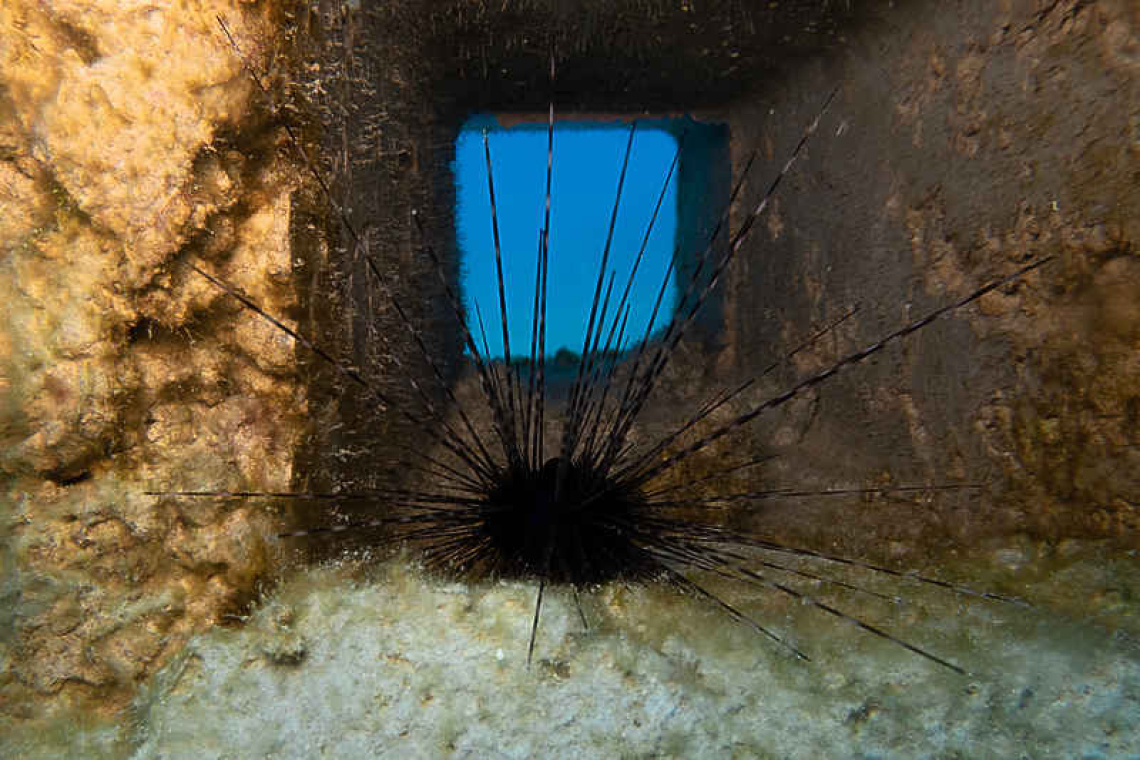Diadema sea urchins (Diadema antillarum) are important algae grazers, but restoration attempts often record low survival of restocked individuals. A new article sheds light on one of the causes for unsuccessful restocking. Restocked sea urchins were monitored with time-lapse cameras for 10 days. There were strong indications that queen triggerfish (Balistes vetula) waited till sunset, when Diadema sea urchins become active, to feed on their favourite prey. The abundance of this predator should therefore be a crucial factor to consider when aiming for restocking of Diadema sea urchins on Caribbean coral reefs.
Diadema sea urchins are important grazers on Caribbean coral reefs. They reduce algae cover and facilitate coral recruitment and growth. A Caribbean wide mass die-off in the 1980s and again in 2022 decimated Diadema populations. Following each die-off, scientists observed a shift to algae dominated coral reefs, where macroalgae smother corals and prevent the establishment of juvenile corals. To restore grazing pressure on macroalgae and thereby stimulate coral development, restoration of Diadema sea urchins is often considered. However, restoration attempts have varied results and retention is often low. Insights into the factors constraining restoration are crucial to successfully restock the sea urchin on Caribbean coral reefs.
Researchers from University of Applied Science Van Hall Larenstein and Wageningen University and Research have developed a successful culture method for this species. In collaboration with the Saba Conservation Foundation, lab-raised juvenile Diadema were stocked on artificial reefs near Saba, Caribbean Netherlands. The restocked Diadema were observed with underwater photo time-lapse during 10 days, to find out what affected their retention.
During the study, 138 day-time predator-prey interactions were recorded on camera. More than 99% of these interactions involved the Queen triggerfish. Although the aggressive predator failed to capture any sea urchin during the day, retention of the sea urchins after the experiment was only 30%. The researchers think the queen triggerfish is an important factor in the low retention. Within a few days, activity of the triggerfish focussed on the time around sunset and sunrise. Although it was too dark to record any predation during night-time, the researchers conclude that the queen triggerfish shifted their attention to the time that the sea urchins become active, after which they were able to feed on them.
Coral reef managers who want to restore Diadema sea urchins should consider additional measures, such as selecting reefs with lower predator densities or implementing temporary predator control measures, to facilitate the acclimatization of urchins after restocking.
The full PeerJ article can be viewed and downloaded via the following link (open access): https://peerj.com/articles/16189/. More information about the Diadema project can be found on: www.hvhl.nl/diadema. Contact information: Alwin Hylkema, This email address is being protected from spambots. You need JavaScript enabled to view it.. Authors: Mareike de Breuyn, Alex J. van der Last, Oliver J. Klokman, and Alwin Hylkema. Photo: Restocked Diadema sea urchin on an artificial reef near Saba.







